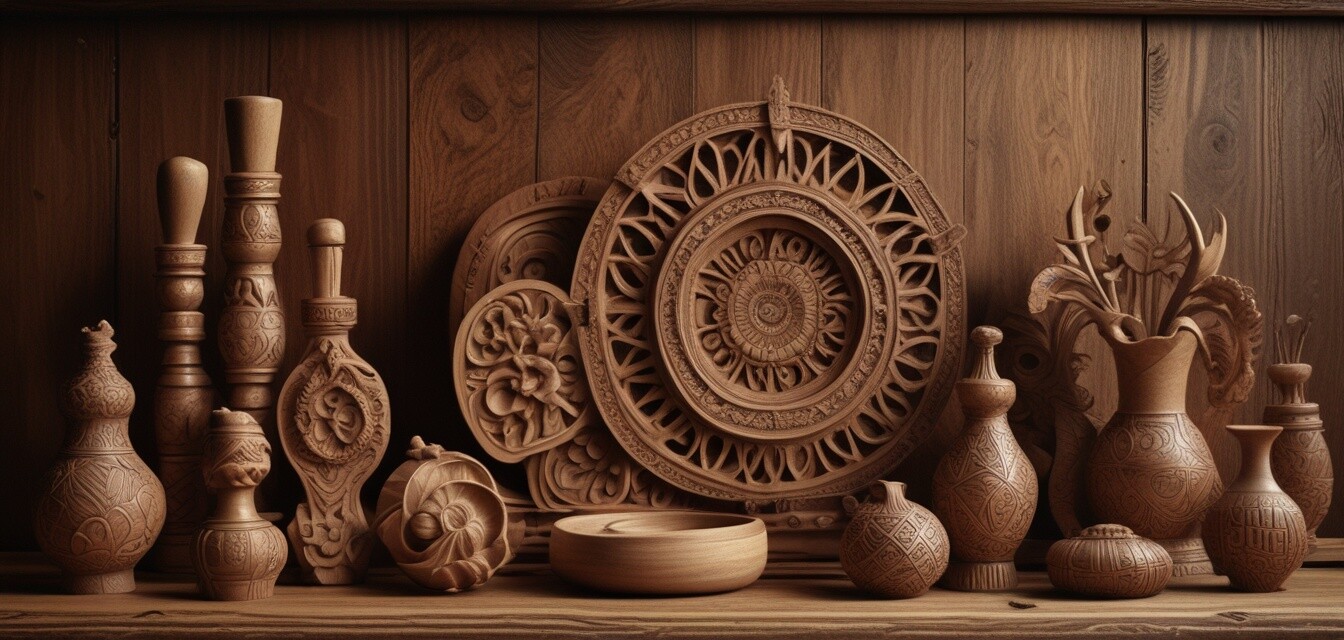
The Revival of Hand-Carved Wooden Decor
Key Takeaways
- Hand-carved wooden decor is making a comeback due to its artisanal charm.
- The demand for sustainable and eco-friendly materials has contributed to this trend.
- Unique craftsmanship adds character and warmth to modern homes.
- Emphasis on local artisans boosts community economies.
- Incorporating hand-carved pieces can elevate interior design aesthetics.
The world of home decor is constantly evolving, but one trend that is seeing a powerful revival is the appreciation for hand-carved wooden decor. In an age dominated by mass production, many consumers are turning to artisanal craftsmanship for its unique character and warmth. This article investigates the resurgence of these beautiful, unique pieces and explores their appeal in modern design.
Understanding the appeal of hand-carved decor
Hand-carved wooden decor items possess an allure that manufactured products simply cannot replicate. Here are some reasons why they are gaining popularity:
- Artisanal quality: Each piece is crafted with care, reflecting the artisan's skill and attention to detail.
- Eco-friendliness: Sourced from sustainable materials, hand-carved decor supports green practices.
- One-of-a-kind pieces: No two items are identical, ensuring each purchase is unique.
- Connection to nature: Natural wood finishes bring an organic element to indoor spaces.
- Timelessness: Hand-carved decor transcends trends, making it a lasting choice.
The role of craftsmanship in today's decor
Hand-carved wooden decor is not only about aesthetics; it speaks to the significance of craftsmanship in contemporary design. Rather than solely seeking functionality, consumers are increasingly looking for pieces that tell a story. By supporting artisans, buyers also contribute to local economies and promote sustainable practices.
Types of hand-carved wooden decor
There's a wide range of hand-carved wooden items available, each serving distinct purposes. Here’s a breakdown of some popular types:
| Type | Description | Common Materials |
|---|---|---|
| Wall hangings | Decorative art pieces carved into intricate designs. | Teak, walnut, pine |
| Statues | Figurines or abstract sculptures that serve as focal points in a room. | Mahogany, cedar, oak |
| Furniture accents | Carved details on furniture pieces such as tables and chairs. | Birch, maple, cherry |
| Kitchenware | Hand-carved utensils, bowls, and platters that are both functional and decorative. | Bamboo, beechwood, teak |
Integrating hand-carved decor into your home
Incorporating hand-carved wooden pieces into your home can transform spaces and add warmth. Here are a few tips for integrating such items into your decor:
Tips for beginners
- Start small: Incorporate one or two pieces to see how they blend with your existing decor.
- Mix and match: Hand-carved items can complement both modern and traditional styles effortlessly.
- Focus on function: Choose functional pieces like kitchenware or furniture accents to ensure everyday use.
- Shop local: Visit artisan markets or local craft fairs to find unique items and support artists.
- Invest in quality: Choose well-crafted items that will stand the test of time.
Sustainable practices in hand-carved decor
Many artisans are dedicated to sustainable practices, providing eco-friendly products that contribute to a healthier planet. Choosing hand-carved wooden decor supports these efforts, promoting the use of responsibly sourced woods and environmentally conscious techniques.
Benefits of sustainable sourcing
Opting for sustainable materials in your decor not only enhances the aesthetic of your home but also has broader implications:
- Protecting forests: Sustainable sourcing helps preserve forest ecosystems and biodiversity.
- Lower environmental impact: Eco-friendly practices reduce pollution and waste.
- Promoting local artisans: Supporting local economies fosters community growth.
Conclusion
The revival of hand-carved wooden decor represents more than just a trend—it is a return to craftsmanship and sustainability that appeals to the modern consumer. By integrating these beautiful, unique items into our homes, we not only enhance our living spaces but support the artisans and practices that make this artistry possible. Explore more about incorporating natural wood pieces in your home through our selection of home décor accents and kitchenware.
Pros
- Unique and personalized decor items
- Sustainable and eco-friendly options
- Supports local artisans and communities
- Brings warmth and character to homes
Cons
- Typically more expensive than mass-produced items
- Availability may be limited in certain regions
- Care and maintenance required to retain beauty